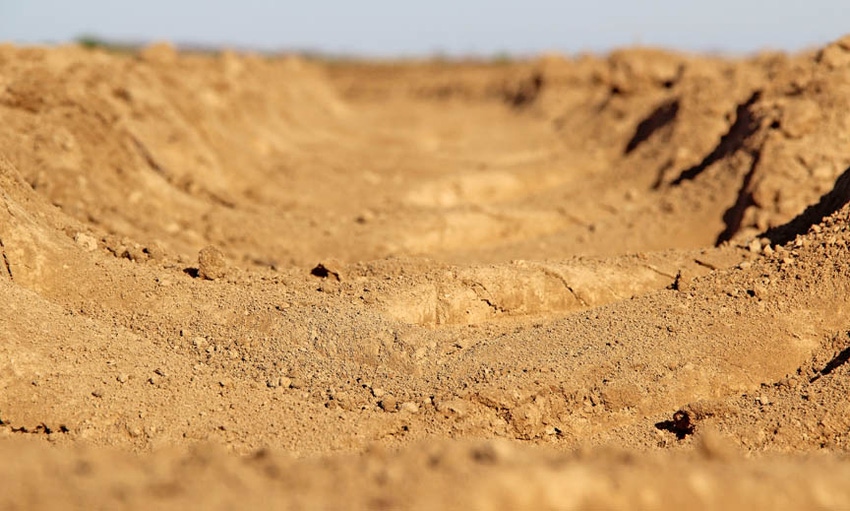December 16, 2013

Risk is a fickle partner and sometimes a farmer is only as secure as his last crop. When losses mount, it’s often not only finances that take a hit — emotional ruin hovers close. As markets bottom out and the consequences of risk come calling, there is sometimes a bitter sliver of overlap between farming and suicide — and agriculture statistics from across the globe bear blunt testimony.
But not all such losses are directly related to rough markets or a lean economy; sometimes the circumstances of ruin are far more primal — and even simpler to trace.
Despair breeds despair, and for producer Ai Guandong, the slide began after the birth of his first child — daughter No. 1. Guandong, a 45-year-old farmer in China’s Hebei Proince, was hoping for a son to help manage his tiny operation, but was caught in the cogs of China’s draconian one-child policy. The one-child policy is mandated from Beijing and pregnancy after the first child can bring harsh fines, forced abortion, or sterilization. However, farmers have an exemption and can have a second child if the firstborn child is a daughter.
For more, see US agriculture readies for China’s baby boom
In 2003, Guandong and his wife had a second child — daughter No. 2, and communist party officials soon arrived on their doorstep seeking payment. Exemption or not, Guandong was fined $1,100; a massive sum for a farmer barely above subsistence. Shortly after, the Guandongs broke Chinese law with the birth of a third child — daughter No. 3. This time, communist officials demanded nearly $10,000 in penalties.
The Guandongs were paying the fines in small increments, but never getting receipts or proof of payment. Desperate for a son, they had a fourth child — daughter No. 4. (With little surprise, sex-selective abortions are frequent in China, resulting in the highest boy-girl ratio on the planet: 118 boys for every 100 girls.)
In 2009, a fifth child was born — son No. 1. Yet, the fines remained in place, strapping the family and finally breaking down Guangdong in 2013.
In December of 2013, communist henchmen reached once again for more money. From the Global Times: “… the village party chief, Ai Liankun, and village head, Hao Guangun, led three other officials to visit the family to collect fines, and they ended up taking away more than 3.5 tons of corn, which represented the entire savings of the family.”
They had taken away Guandong’s basic human rights; then his money; and last his corn crop. The next day Guandong, maybe in a rage against the machine act, went to the party chief’s house and committed suicide by drinking pesticide and dying shortly after in a hospital. The pressure is gone for Guandong — only to be compounded on his wife and carried by five children for the rest of their lives.
Lonely reach
Farming can be a lonely line of work when times are lean, and in 2013, losses took quite a toll across the agricultural world. In Ireland, following one of the wettest years on record, farmers were hit with a fodder crisis that was a major factor in a significant rise in suicide numbers. “Farmers who would have usually cut silage for winter feed in late May or early June found themselves having to wait until mid-July, meaning there was not enough to make it through the longer winter,” reports the The Irish Independent. Fodder shortages meant feed had to come in through the gate, financially breaking many producers.
In France, a health institute study released in 2013 showed that between 2007-2009, 485 farmers took their own lives as agriculture costs rose and profits declined. France has a relatively high suicide rate, but for farmers, the numbers were alarming. From The Local: “… the number of suicides among farmers stands at 35.9 per 100,000, meaning it is the sector in France most affected by the phenomenon. According to Europe1 radio, for factory workers in France the suicide rate stands at 31.8 per 100,000, for policemen it is 32 out of 100,000, for doctors it stands at 31 (per 100,000) and for the general population it is 16 per 100,000.”
In India, farmer suicide remains a hot-button issue, with blame often cast toward biotech crops and corporate agriculture. (For more, see Indian farmer suicides a case of misplaced GM blame.)
The United States hasn’t escaped. Over the last several years, California’s dairy crisis has brought devastation to several farm families. From the San Francisco Chronicle: “According to the Western United Dairymen … three dairy farmers have committed suicide since 2009, despairing over losing their family’s dairies.”
The stories and statistics are invariably bleak; grim reminders of the pitfalls of agriculture.
Follow me on Twitter: @CBennett71 or email me: [email protected]
Blog archive
Chinese seed thieves hit US farmland; feds hit back
Gun control and agriculture clash over homemade pistol
Farmland hides mobster for 10 years
What are the greatest agriculture breakthroughs in history?
Oil tankers, not icebergs, a water scarcity solution?
Harold Hamm, sharecropper to oil and fracking tycoon
The myth of the aging US farmer
Pig farmer replays Deliverance with repo men
You May Also Like




